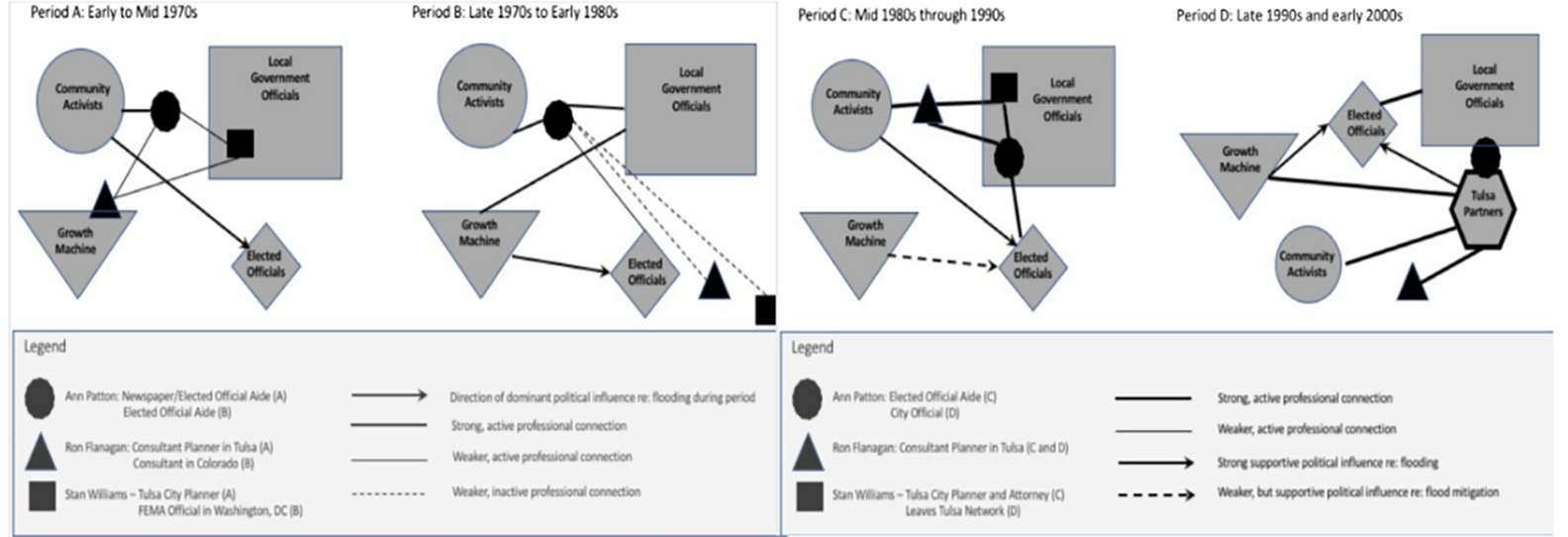In June 2021, SCIPP researchers Ward Lyles, Penn Pennel, and Rachel Riley published a study in Natural Hazards Review that examines Tulsa’s progression toward effective flood hazard mitigation. This month, their paper has been selected to be featured in the Editor’s Choice section of the Natural Hazards Review page in the American Society of Civil Engineers (ASCE) Library. With this feature, the paper is made free with registration for a three-month period.
Motivated by observations of Tulsa’s remarkable transition from one of the most flood-prone cities in the nation in the 1970s to its present-day success in mitigating flood hazards, Jazz on Tulsa Time: The Remarkable Story of the Network of Flood Mitigation Champions behind the Tulsa Turnaround addresses two questions: First, does Tulsa’s nationally acclaimed model local hazard mitigation effort fit what the research points to as the standard model of hazard mitigation? Second, how have the characteristics and roles of local champions and the relationships between them shaped Tulsa’s successes?
The case study analysis found that Tulsa’s hazard mitigation effort shared many of the principal features of the standard model of hazard mitigation, thus confirming its importance. Additionally, analysis of the second research question gave insight into how local champions shaped the network of mitigation advocates in Tulsa. These findings stressed the importance of following the standard model for hazard mitigation, as well as promoting a diverse group of stakeholders with regard to their professional roles, personal characteristics, and relationships, in order to cultivate the conditions for local champions of hazard mitigation to succeed.
The study also offers four recommendations for practitioners and policy makers who are interested in replicating Tulsa’s successes in other locations: 1) Foster and sustain a team of champions, 2) Make room for multiple models of leadership, 3) Acknowledge the personal sacrifices that can arise for a mitigation champion, and 4) Approach hazard mitigation primarily as a community planning issue, not an emergency management function.
The complete manuscript can be accessed for free with registration for a three-month period at https://ascelibrary.org/journal/nhrefo. After three months, the paper can be found in the Editor’s Choice Collection on the same page.

